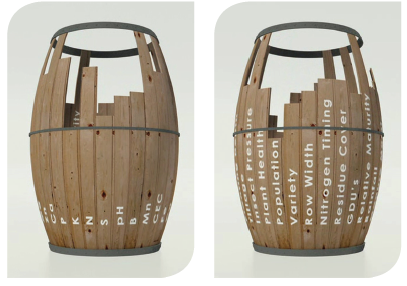Foundations of agronomy and geography are the starting place for data-driven decisions.
I believe data driven decisions will power change in every aspect of crop production. Your data can be a valuable business asset that leads to greater profitability.
There are some key foundational principles in using data to drive decisions in crop production that are worth reviewing. The first is centered on uniqueness. Just as we each have unique fingerprints and DNA, each part of every field is unique.
Much of your data that can be used for making better decisions is being collected with a device connected to a GPS receiver. Most of the software that reads the data files is a version of a geographic information system (GIS). The difference between this software and a database you might use for your livestock operation or some other aspect of your farming operation is the first word – geographic. Your data is stored tied to a unique geographic place in the world. While there are other areas that are very similar, none of those are exactly the same.
Why does a product work so well in one place, but not at all in another? Why does the ideal rate of an input change within parts of your field? Many times, the answer is as simple as “geography matters”! If you treat all you acres as if they are same, you’ll lose out on efficiencies and profits.
The second principle to consider is best illustrated by the rain barrel. The rain barrel, with staves of varying heights, is a visual way to illustrate the real-world reality of what limits yield in any one place within a field changes. Nitrogen is limiting in the southeast corner of the field but not the center. Population is limiting one place but not another.
The rain barrel concept is easy to talk about but challenging to put into practice. Our goal is to maximize return on every dollar invested. Ideally, we are adjusting every input to not only match the uniqueness of the geography but also to match the combination and limitations of the other staves in the rain barrel in each part of the field.

The irony of our leap forward in planter technology is that, in many cases, we now have more uniformly-spaced, nutrient-deficient plants that anyone would ever have imagined. A one-time investment in upgrading planters has been easier to justify than the continuous re-investment in fertility, especially on rented acres.
An appreciation for these two principles will lead you to collect as much geo-referenced data as possible.
